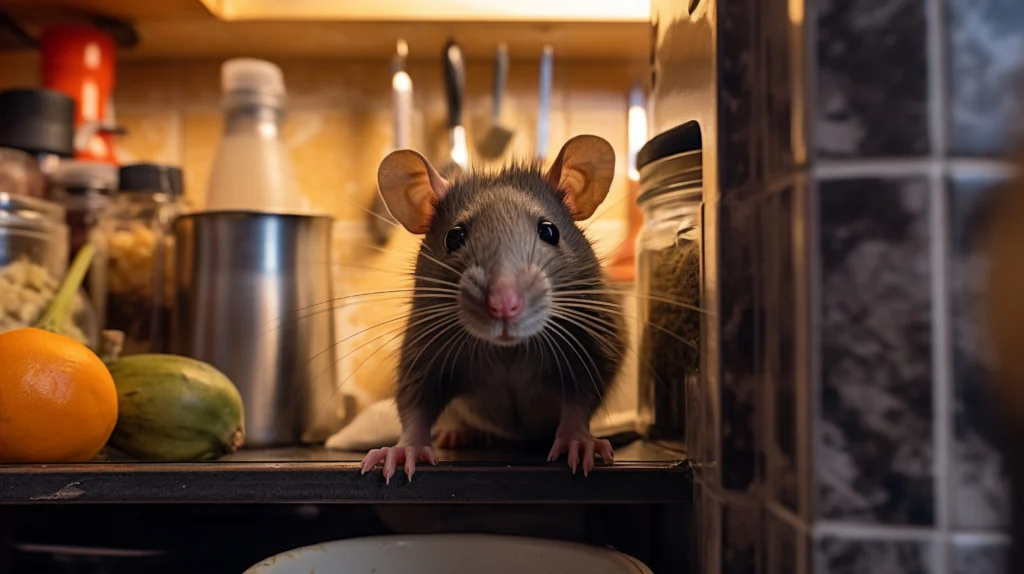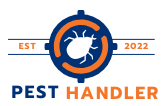Contents Guide
- 1 Identifying and Preventing Common Restaurant Pests
- 2 Factors Attracting Pests to Restaurants
- 3 Preventative Measures for a Pest-Free Restaurant
- 4 Regular Inspections and Maintenance
- 5 Training and Awareness Among Staff
- 6 Working with Pest Control Professionals
- 7 Complying with Health and Safety Regulations
- 8 Conclusion
- 9 FAQ's
Running a restaurant involves many challenges, but pest control is one of the most crucial. Pests like cockroaches, rodents, and flies can damage your reputation and lead to health violations and hefty fines.
According to a National Restaurant Association survey, 46% of restaurant owners report pest problems, underscoring the importance of proactive prevention. To keep your restaurant pest-free, prioritize cleanliness, seal cracks, and ensure proper waste disposal. Regular inspections and professional pest control services are essential for catching issues early.
Proper food storage and sanitation practices also discourage pests from entering. By implementing these strategies, you can safeguard your restaurant from pests, maintain a compliant and clean environment, and protect your reputation and business. Prevention is key to ensuring both your customers’ satisfaction and your bottom line remain intact.
Identifying and Preventing Common Restaurant Pests
Pests are a major concern for restaurants, and understanding the most common ones is crucial for effective prevention.
- Cockroaches thrive in warm, damp areas and feed on food scraps and grease, spreading harmful bacteria like Salmonella and E. Coli. To prevent infestations, keep kitchens dry, clean food spills immediately, and seal all cracks in walls and floors.
- Rodents (Mice and Rats) are attracted to food storage areas, causing damage and spreading pathogens. Prevent them by sealing entry points, using proper waste management, and storing food in airtight containers.
- Fruit Flies and House Flies spread diseases like typhoid and dysentery by contaminating food. Eliminate standing water, clean drains regularly, and set fly traps to minimize their presence.
- Ants are drawn to sugary or greasy residues. Prevent them by cleaning up food particles promptly and sealing cracks where ants might enter.
- Stored Product Pests such as weevils, beetles, and moths often arrive in poorly sealed food containers. To prevent this, inspect incoming shipments, store dry goods in airtight containers, and rotate stock regularly.
By maintaining cleanliness, proper storage, and sealing entry points, you can keep pests at bay and ensure a safe, hygienic environment for both staff and customers.
Factors Attracting Pests to Restaurants
Pests don’t randomly appear in your restaurant—they’re drawn by certain environmental or operational factors. Identifying and addressing these can save you a lot of trouble.
- Food Residues: Crumbs, spills, and leftovers are a buffet for pests.
- Improper Waste Management: Overflowing or improperly sealed trash bins are an open invitation for rodents and insects.
- Moist Environments: Leaky pipes, damp kitchen floors, or unclean drains create ideal breeding grounds for pests like cockroaches and flies.
- Unsealed Gaps and Cracks: Rats and mice can sneak through even the smallest openings in walls, doors, windows, and foundations.
- Clutter: Piles of unused boxes, paper, and equipment provide nesting areas.
The key to effective restaurant pest management is eliminating these risk factors before pests find their way in.
Preventative Measures for a Pest-Free Restaurant
Prevention is always better (and cheaper) than cure. Here’s a detailed checklist of what your team can do to keep pests at bay:
1. Proper Waste Management
- Use bins with tight-fitting lids and keep trash sealed at all times.
- Dispose of garbage frequently—don’t allow it to build up overnight.
- Locate dumpsters away from kitchen entrances and regularly sanitize the area around them.
2. Maintain High Sanitation Standards
- Sweep, mop, and sanitize all surfaces daily, particularly in kitchen and dining areas.
- Clear food particles from cracks, crevices, ovens, and storage shelves.
- Clean floor drains with disinfectants regularly.
3. Store Food Properly
- Transfer ingredients like rice, flour, and sugar to pest-proof airtight containers.
- Rotate stock regularly and practice First-In-First-Out (FIFO) to prevent expired products from becoming pest magnets.
- Check and seal incoming shipments to avoid bringing in stored product pests.
4. Seal Entry Points
- Inspect and seal cracks, crevices, and gaps in walls, pipes, and windows.
- Install door sweeps and air curtains to block insects and rodents.
- Use mesh screens for ventilation areas.
5. Monitor Moisture Levels
- Fix leaky faucets and drain pipes immediately.
- Don’t leave standing water—this becomes a breeding ground for flies and mosquitoes.
By making these routine practices part of your operations, you can prevent vermin infestation in restaurants proactively.
Regular Inspections and Maintenance
Pest control in restaurants requires vigilance. Regular pest control inspections ensure you catch potential issues before they escalate.
- Inspections:
Schedule monthly (or quarterly) inspections of your facility, focusing on high-risk zones like storage rooms, kitchen drains, and trash disposal areas.
- Maintenance:
Replace damaged window screens and repair any gaps. Maintain equipment like refrigerators and dishwashers to prevent leaks or malfunctions that could attract pests.
- Documentation:
Keep a pest logbook noting sightings, preventive measures, and pest control services performed. Hiring a pest control professional can also provide a fresh set of eyes and expertise.
Training and Awareness Among Staff
Your team is your first line of defense against pests. Providing them with proper training and awareness ensures they are vigilant and proactive.
Suggested Training Programs:
- Identifying early signs of infestations (e.g., rodent droppings, grease marks).
- Safely handling and disposing of waste.
- Enforcing cleaning and food storage protocols.
Leadership should regularly reinforce best practices in staff meetings and huddles. The collective effort of a well-informed team is key to long-term success.

Working with Pest Control Professionals
Professional pest control for hotels and restaurants may seem like an unnecessary cost, but it’s an investment that pays off by protecting your establishment.
What to Look for in a Pest Control Company:
- Licensed and insured professionals.
- Experience in handling restaurant pest management.
- Transparent processes and eco-friendly pest control chemicals.
- 24/7 support for emergencies.
Professional services often combine chemical pest control treatments, monitoring devices, and reporting systems to tackle pests effectively.
Complying with Health and Safety Regulations
Compliance isn’t just about avoiding fines—it’s about ensuring safe, high-quality food. Effective pest control in the food industry plays a crucial role in maintaining these standards. Here’s how to stay on top of restaurant pest control regulations:
- Familiarize yourself with your local health department’s standards.
- Maintain transparent records of your pest control plan.
- Conduct mock inspections to gauge your compliance level.
- Train staff on handling health inspections.
Being compliant demonstrates your commitment to customer safety and can act as a brand differentiator.
Conclusion
In conclusion, preventing pest infestations in a restaurant is essential for maintaining a clean, safe, and reputable establishment. By understanding the common pests that threaten your business and the factors that attract them, you can implement proactive measures such as proper waste management, high sanitation standards, and sealing entry points.
Regular inspections, staff training, and professional pest control services further strengthen your defenses. Staying compliant with health and safety regulations not only protects your customers but also ensures the long-term success of your restaurant.
A pest-free environment is key to building customer trust, preserving food quality, and safeguarding your reputation in the competitive restaurant industry.
FAQ's
Vermin infestation in a restaurant refers to the presence of pests like rats, mice, and cockroaches, which can contaminate food, damage property, and pose health risks.
The cost of pest control for restaurants can vary based on the size of the establishment and the severity of the infestation, but typically, it ranges from $50 to $500 per month.
Restaurant pest management involves implementing strategies and treatments to prevent, control, and eliminate pests in a restaurant environment, ensuring a safe and hygienic dining space.
Quarterly inspections are recommended, though high-risk establishments may benefit from monthly check-ups.
Yes! Many pest control providers use eco-friendly solutions that prioritize safety while effectively managing pests.



 Pest Prevention Tips
Pest Prevention Tips